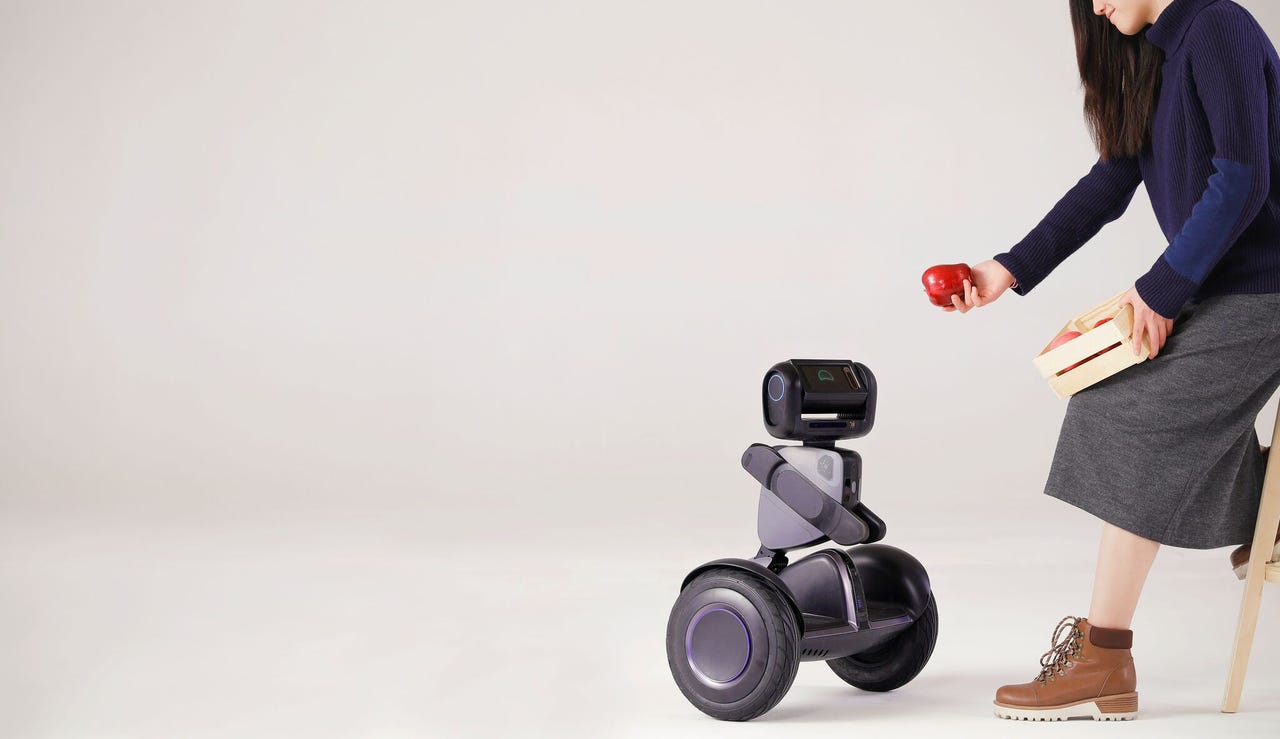CES 2018: Segway's Loomo toggles between robot and hoverboard


CES 2021
A couple years back, at CES 2016, Segway and Intel teamed up on a two-wheeled, self-balancing personal transport device with a twist: When the rider stepped off, the hoverboard turned into a robot.
At the time, it was more gimmick than promising new product, and the CES crowd reacted with an appropriate mix of humor and confusion. Two years on, it looks like Segway Robotics, a wholly-owned subsidiary of Segway-Ninebot, is doubling down on the technology, which has evolved into something more refined.
Whether it's a product that can resuscitate the Segway name remains to be seen.
The Loomo toggles between a hoverboard and a two-wheeled robot companion. As a hoverboard, it gets marks for being relatively all-terrain. It can handle grass, inclines, and bumpy road surfaces. In transportation mode it's limited to an impressive 11 MPH.
The robotic functionality seems to be a work in progress. The Android-powered robot can follow users autonomously, recognize faces, take pictures, and interact via gesture and voice command.
The device has the now-familiar sensors and functions seen in the newest crop of home robots, including computer vision and depth sensing, microphones, ultrasonic and infrared sensors, object and facial recognition, and AI-driven learning. Segway plans to roll out new features every month after launch.
What's still unclear is who the customer will be for a robot you can ride.
Hoverboards, after all, gained popularity because unbranded clones from China were dirt cheap (helping explain their propensity to explode). Tabletop personal assistants in the form of Alexa and Google Assistant are becoming ubiquitous, and a new generation of tabletop robots with limited motion designed to convey emotion (see: Jibo) are poised to take off, but there hasn't been an example of a successful personal assistant robot with full mobility, and lots of companies have tried.
My guess is that Segway has bigger plans for wedding artificial intelligence and mobility robots, and that it's treating Loomo as a stepping stone. You can imagine a security robot evolving from the Loomo platform, for example, or a telepresence robot for remote workers.
To that end, Segway Robotics is also debuting an enterprise version of the Loomo that includes a cart capable of carrying a small load. Given Loomo's all-terrain capabilities and relatively long range (18 miles on a charge), it could make an ideal platform for last-mile delivery in urban areas.